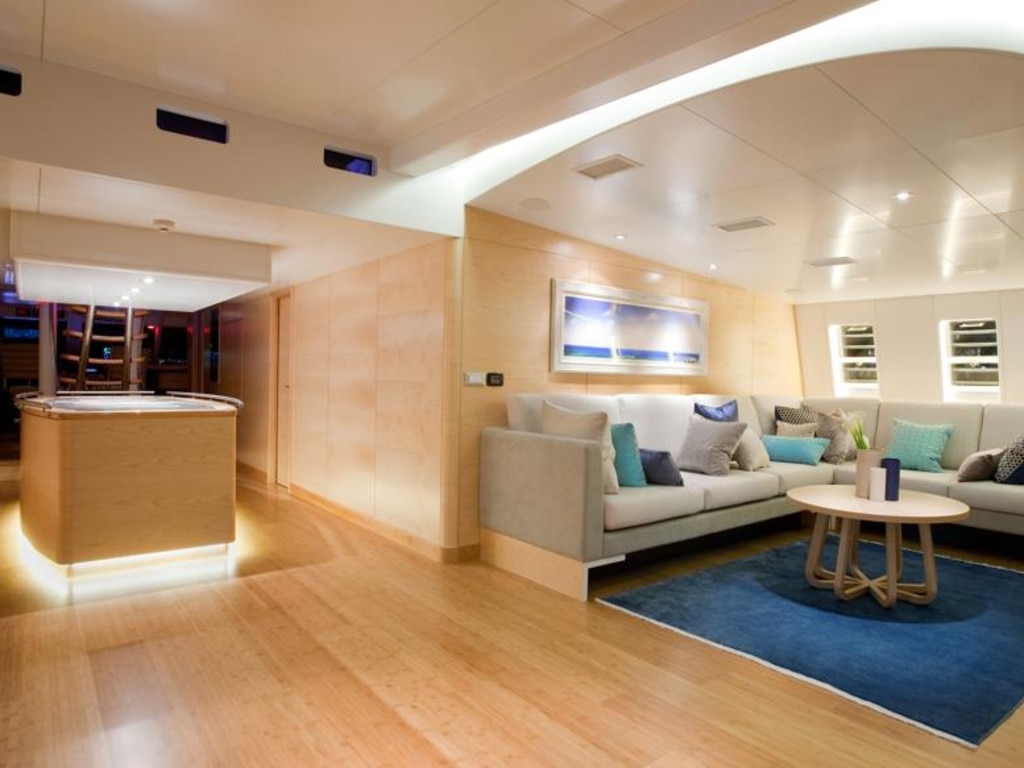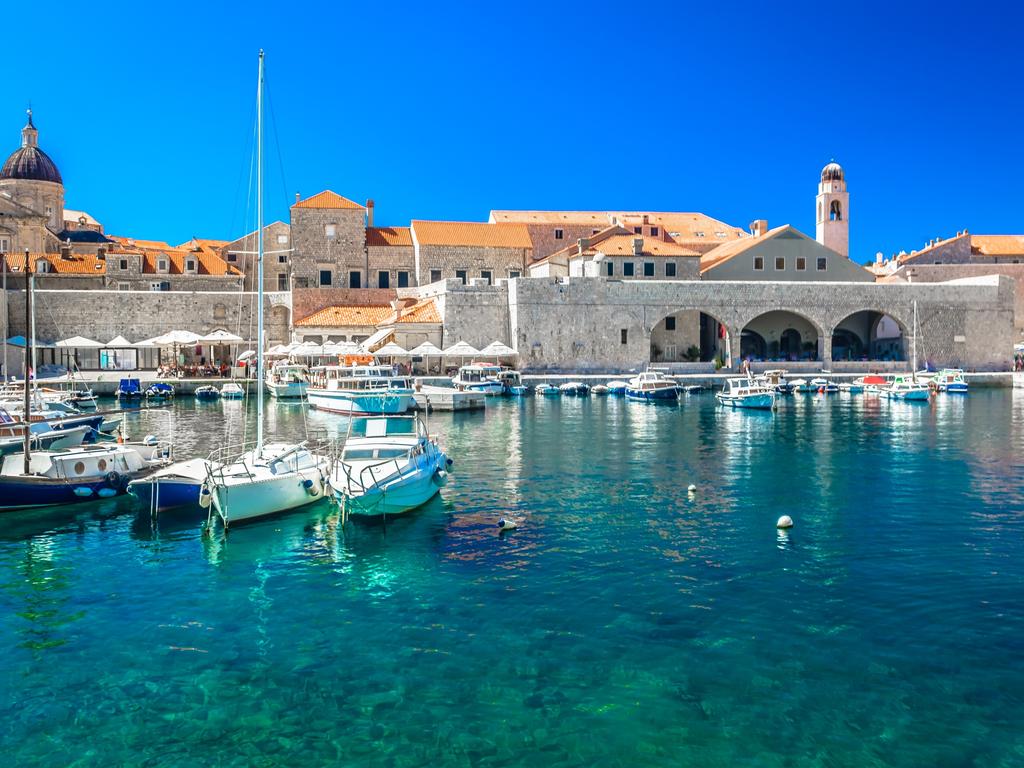‘Like a pressure cooker’: What it’s really like to work on a superyacht
MANY young people are drawn to the big bucks and glamour of work on multimillion-dollar luxury yachts. But they often find the reality of life below deck is not what they expect.
IT’S a job that promises six-figure salaries, access to the world’s glitziest destinations and endless parties with celebrities and royalty.
Working on a multimillion-dollar superyacht is an increasingly popular job option for young people keen to work as deckhands, stewardesses and captains on the luxury vessels as they cruise through the Mediterranean and Caribbean seas.
But the mysterious life of workers below the deck on these opulent superyachts has been thrown in the spotlight after the sudden death of Sydney model Sinead McNamara, who was found dead on the Mayan Queen IV in Greece.

The 20-year-old had been working for just four months on the $195 million superyacht before her body was found on Friday at the back of the boat that was anchored off the island of Kefalonia.
Ms McNamara, who was originally from Port Macquarie in New South Wales, had been working on yachts while travelling through Europe — not unlike many young travellers hoping to make extra money by taking up work on the boats.

Recruitment agencies promote the jobs as opportunities to experience great adventures and possibly earn up to $195,000 a year tax-free, depending on their role and size of the vessel.
But no matter how glamorous a gleaming superyacht may seem, for the crew, the reality of life on board is a stark contrast to what the A-list guests enjoy above deck.
Australian woman Sarah Begbie was expecting days of champagne brunches and all-night parties when she started work as a hostess on the multimillion-dollar yacht Trinity, based in South-East Asia, when she was 23.
It’s not quite what she got.
“My daily tasks included but were not limited to, all food and beverages services, all housekeeping including making up the guest rooms, guest and crew laundry, linen and turn down service, accounts, stock control and provisioning,” she said.

“Basically imagine a 50m yacht which contains six crew bedrooms, crew mess, galley, seven guest bedrooms, eight guest bathrooms, main saloon, dining room, front lounge and bridge — all of which myself and two stewardesses are responsible for keeping clean 24/7 while doing all of the food and beverage service and at times containing as much as 11 crew and 16 guests. It was intense.”
Ms Begbie worked between 16 and 18 hours a day, and the little time she had in her room had its own challenges — she said her quarters were “smaller than a jail cell”.
“I earned probably just over $4504 per month. This was, however, tax-free money and I of course had no living expenses,” she said.

“Other boats, however, offer chief stewardesses anywhere between $5489 to $7955 per month.
“Our boat was privately owned which meant we didn’t receive tips. However, having mixed and worked with a lot of different crew, I heard a lot of stories of amazing tips — of people working in the Mediterranean receiving as much as $10,000 for a week-long charter.”
The job wasn’t without some perks. One birthday, Ms Begbie received an Armani watch and was treated to a lavish dinner by the yacht’s owners.
And she did get an insight into how the very wealthy lived.
“There were always plenty of young female guests on board to keep any single men occupied and these were women that looked like they had just come from the Victoria’s Secret runway,” she said.

“Our backyard was literally crystal clear waters and deserted white beaches for as far as the eye could see. Although while on charter it was difficult to appreciate this, during time off and breaks it was amazing.”
Among the benefits of working on superyachts were tax-free salaries and the opportunity for tips from highrolling guests. And if they can put up with the cramped quarters, staff got accommodation and utilities for free.
But the salary ranged wildly, depending on the size of the boat and the role, former yacht workers told news.com.au.
While captains could earn anything from $75,000 to $195,000 a year, deckhands fetched between $24,000 and $51,000.
And the work was hard. As well as catering to every diva demand of the owner and their guests — who were often protected by nondisclosure agreements signed by staff — workers had to keep the multimillion-dollar vessels in tip-top condition.

Former deckhand Alex, who worked for six months on a new 37m super yacht, described his job as a “glorified cleaner”.
He had to chamois the boat every morning, remove condensation and polish everything to a high sheen.
“When you do varnishing it’s not just one or two coats, it’s 10-12 coats,” he told news.com.au. “That’s what it needs to keep it in the immaculate stage. It’s worth millions and millions of dollars so that’s what’s expected here.”
Bethany Silcox worked as a superyacht stewardess for three years on various vessels, owned by wealthy businessmen and Middle Eastern royalty, and “often had Russian oligarchs as charter guests”.
“Two of those were charter yachts. One cost $1 million (A$1.4 million) per week to charter and the other €35,000 (A$56,000) per week, before provisioning and fuel,” she told the Daily Mail.
But there was limited opportunity to indulge in the decadent setting.

“The longest day I had was 25 hours continuously on my feet and the longest stint I did at sea was 40 consecutive days without stepping foot on land,” Ms Silcox said.
Another former yacht staff member named Sarah, who worked in the industry for five years, said it could be like a “pressure cooker” below deck.
She started on a small-family owned private yacht in Valencia before moving to a larger boat with 15 crew based in Italy.
“The extreme wealth on some of these massive boats is something you would never dream of,” Sarah told news.com.au.
“You can’t contemplate how much money these people have, it’s crazy.
“Everything depends on who’s coming on board and the owners. You’re far from family and friends. You’re working with 15 crew that you live and sleep and play with.
“It’s a really intensive situation. It can be fabulous in one sense but you’re working 12 to 16 hours a day, everyday. It can become like a pressure cooker situation.”



